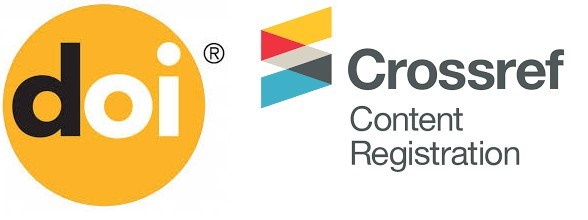Development of An Arabic E-Magazine on Jumla Ismiyah Learning Topics
DOI:
https://doi.org/10.32699/liar.v7i2.5674Keywords:
learning media, e-magazine, Arabic language, jumla ismiyahAbstract
This study aims to develop E-Magazine-based learning media in Arabic language learning in high school with a focus on jumla ismiyah material. The research method used is Research and Development (R&D) following the Dick and Carey ADDIE model, which includes the stages of analysis, design, development, implementation, and evaluation. Based on the results of the study showed that at the validation stage of an E-Magazine developed for Arabic language learning on jumla ismiyah material at SMA Muhammadiyah 4 Surabaya, which consisted of 3 validations, namely material experts who had a validity value of 91.11%, media experts produced a very high score, which was 94.11%, and design experts had a validity value of 88.11%, all of which were included in the very valid category. Meanwhile, the validation of the E-Magazine learning media response test on students showed that small and extensive field trials had validity rates of 89.81% and 89.94%, respectively, which consistently showed that E-Magazine was very feasible to be used as a learning medium and received a positive response from students. The conclusion is that the development of an E-Magazine for Arabic language learning is very feasible to be implemented with an excellent percentage of learning success.
References
Andhini, Gina Prilya, Iis Nurasiah, and Irna Khaleda Nurmeta. 2022. “Nilai Kearifan Lokal Dalam E-LKS Berbasis Wayang Sukuraga Sebagai Perwujudan Profil Pelajar Pancasila.” Jurnal Pedagogi Dan Pembelajaran 5(1):92–99.
Anshori, Muslich, and Sri Iswati. 2017. Metodologi Penelitian Kuantitatof. 1st ed. Surabaya: Airlangga University Press.
Arifin, Novia Arifah, Arsad Bahri, Muhiddin Palennari, and Yogi Saputra. 2019. “Pengembangan Sumber Belajar Genetika Berbasis E-Magazine Bagi Siswa SMA.” PROSIDING SEMINAR NASIONAL LP2M UNM - 2019 “Peran Penelitian Dalam Menunjang Percepatan Pembangunan Berkelanjutan Di Indonesia 716–20.
Arikunto, Suharsimi. 2009. Dasar-Dasar Evaluasi Pendidikan Edisi REvisi. Jakarta: PT. Bumi Aksara.
Atiqoh. 2023. Desain Bahan Ajar Berbasis Problem Based Learning. Malang: Seribu Bintang.
Durahman, Nanang, and Deni Ahmad Jakaria. 2020. “Implementasi Media Pembelajaran Pendidikan Agama Islam Untuk Meningkatkan Belajar Siswa Di Sekolah Dasar.” JUTEKIN (Jurnal Teknik Informatika) 8(1). doi: 10.51530/jutekin.v8i1.426.
Fatkhurrokhman, Mohammad, Suroso Mukti Leksono, Sulaeman Deni Ramdan, and Ikman Nur Rahman. 2018. “Learning Strategies of Productive Lesson at Vocational High School in Serang City.” Jurnal Pendidikan Vokasi 8(2):163. doi: 10.21831/jpv.v8i2.19485.
Jailani, Mohammad. 2022. “Pembelajaran Bahasa Arab Berbasis Kurikulum Merdeka Di Pondok Pesantren.” Jurnal Praktik Baik Pembelajaran Sekolah Dan Pesantren 1(01):7–14. doi: 10.56741/pbpsp.v1i01.10.
Kadir, Abdul. 2018. “Pengaruh Kompetensi Dosen Dan Motivasi Belajar Terhadap Kemampuan Analisis Statistika Mahasiswa Ftik Iain Kendari.” Al-Izzah: Jurnal Hasil-Hasil Penelitian 13(1):1. doi: 10.31332/ai.v13i1.886.
Karwono, and Heni Mularsih. 2018. Belajar Dan Pembelajaran Serta Pemanfaatan Sumber Belajar. 2nd ed. Depok: Rajagrafindo Persada.
Mayer, Richard E. 2009. Multimedia Learning: Prinsip-Prinsip Dari Aplikasi. New York: Cambridge University.
Nazla, Thafa, and Nila Fitria. 2021. “Pengembangan Kepercayaan Diri Melalui Metode Show and Tell Pada Anak.” Jurnal Anak Usia Dini Holistik Integratif (AUDHI) 3(1):31. doi: 10.36722/jaudhi.v3i1.590.
Osman, Kamisah, and Tien Tien Lee. 2014. “Impact of Interactive Multimedia Module With Pedagogical Agents on Students’ Understanding and Motivation in the Learning of Electrochemistry.” International Journal of Science and Mathematics Education 12(2):395–421.
Prayudi, Andi, and Fathirma’ruf. 2022. “Pengembangan Perangkat Pembalajaran Menggunakan Model TWA Pada Matakuliah T&P Pemograman Web I.” JURISTIK (Jurnal Riset Teknologi Informasi Dan Komputer) 2(1):12–17. doi: 10.53863/juristik.v2i1.485.
Rangsing, Balada, Subiki, and Rifáti Dina Handayani. 2015. “Pengembangan Bahan Ajar Fisika Berbasis Majalah Siswa Pintar Fisika (MSPF) Pada Pembelajaran IPA Di SMP (Pokok Bahasan Gerak Pada Benda).” Jurnal Pembelajaran Fisika 4(3):243–47.
Richards, Jack C., and Theodore S. Rodgers. 2001. Approaches and Methods in Language Teaching. Cambridge: Cambridge University Press.
Sadiman, Arief S., Harjito, Anung Haryono, and Rahardjo R. 2018. Media Pendidikan: Pengertian, Pengembangan, Dan Pemanfaatannya. 18th ed. Depok: Rajagrafindo Persada.
Sari, Devi Rafika, and Sholeh Najmul Millah. 2023. “Implementasi Teknologi Informasi Dan Komunikasi Dalam Pembelajaran Bahasa Arab Di MI Manarul Islam Malang.” 3(1):44–53.
Setiawan, Ud Ulana, and Hasnil Oktavera. 2021. “Pengembangan Teknologi Tepat Guna Media Pembelajaran E-Learning Berbasis Website Di Program Studi Pendidikan Bahasa Arab Iain Manado.” 2(1):66–82.
Suaibah, Lilis, and Taufiqur Rahman. 2020. “Smart Tree Learning Media - We Can Be Based on Android For Arabic Subjects/ Media Pembelajaran Pohon Pintar-Kita Bisa Berbasis Android Untuk Matakuliah Bahasa Arab.” Ijaz Arabi Journal of Arabic Learning 3(1):89–106. doi: 10.18860/ijazarabi.v3i1.8215.
Surjono, Herman Dwi. 2017. Multimedia Pembelajaran Interaktif. Yogyakarta: UNY Press.
vahrotun Nisa, Risvia. 2017. “Peranan Madrasah Dalam Meningkatkan Kemampuan Bahasa Arab Sebagai Bahasa Internasional.” Jurnal An Nabighoh 19(02):225–48.
Widiyastuti, Nia, Slameto Slameto, and Elvira Hoesein Radia. 2018. “Pengembangan Media Pembelajaran Interaktif Menggunakan Software Adobe Flash Materi Bumi Dan Alam Semesta.” Perspektif Ilmu Pendidikan 32(1):77–84. doi: 10.21009/pip.321.9.
Yasmar, R. 2017. “Multimedia Interaktif Pembelajaran Bahasa Arab Untuk Siswa Madrasah Aliyah.” Arabiyatuna: Jurnal Bahasa Arab.
Downloads
Published
Issue
Section
License
Authors who publish with this journal agree to the following terms:
a. Authors retain copyright and grant the journal right of first publication with the work simultaneously licensed under a Creative Commons Attribution-ShareAlike 4.0 International License. that allows others to share the work with an acknowledgement of the work's authorship and initial publication in this journal.
b. Authors are able to enter into separate, additional contractual arrangements for the non-exclusive distribution of the journal's published version of the work (e.g., post it to an institutional repository or publish it in a book), with an acknowledgement of its initial publication in this journal.
c. Authors are permitted and encouraged to post their work online (e.g., in institutional repositories or on their website) prior to and during the submission process, as it can lead to productive exchanges, as well as earlier and greater citation of published work (See The Effect of Open Access).












